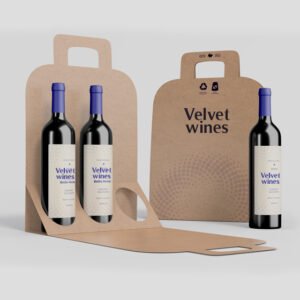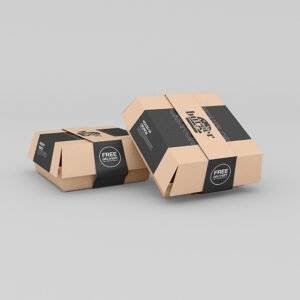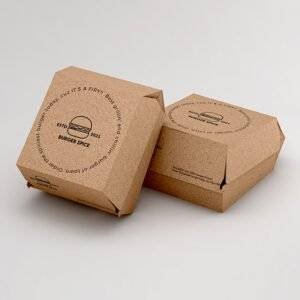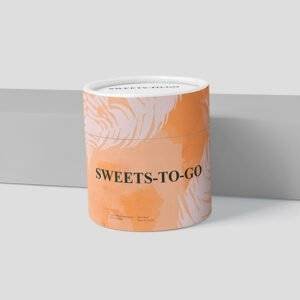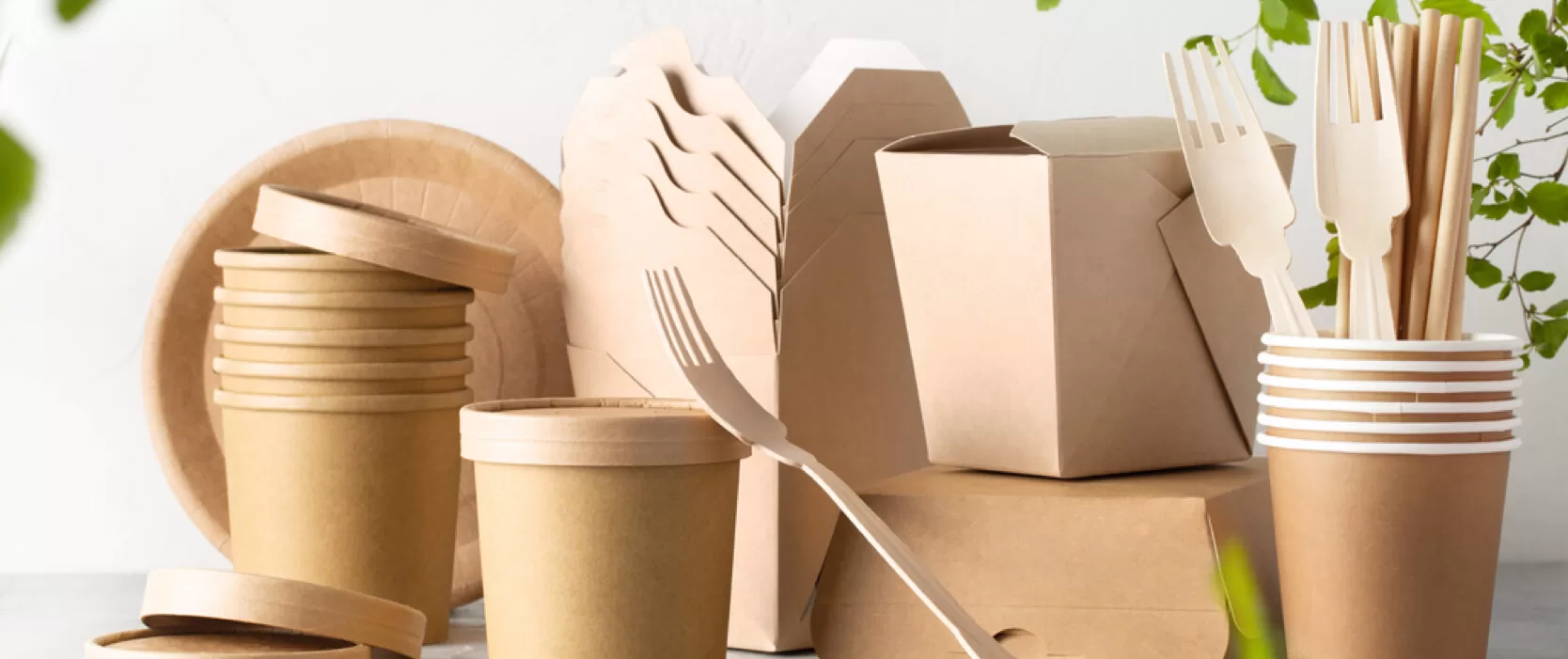With the rise in sustainability, businesses and industries are putting in more efforts to choose greener options. Whether it’s their products or packaging, many brands are opting for environmentally conscious materials to help preserve the environment and also promote their ethical strategies. Eco-friendly food packaging is an emerging aspect that the food industry is implementing.
Due to the increasing awareness and demand of customers for sustainable products, businesses are more focused than ever on coming up with eco-friendly packaging options, which are essential for their brand’s identity.
But why is eco-friendly packaging an emerging aspect? It is because packaging waste, which is mostly made up of plastics and other non-biodegradable materials, makes up about 60% of the land pollution. If you are looking for ways to turn your food packaging into a greener choice, then this blog is for you.
Why is Eco-friendly Food Packaging Important?
Eco-friendly packaging within the food industry plays a pivotal role in mitigating environmental impact by reducing waste and lowering carbon footprints. As global concerns about sustainability escalate, businesses are recognizing the significance of adopting green packaging solutions. These alternatives, ranging from biodegradable materials to compostable options, not only minimise the use of non-renewable resources but also contribute to the overall reduction of plastic pollution.
Choosing eco-friendly packaging aligns with consumer values, fostering a positive brand image and meeting the growing demand for environmentally conscious choices. Ultimately, investing in such practices promotes a healthier planet and resonates with the increasing eco-awareness of consumers.
Below are some of the eco-friendly packaging materials that you can use for food packaging.
Kraft Paper Boxes
Kraft paper boxes are made from unbleached and natural kraft paper and are a sustainable and versatile choice for eco-friendly packaging. As they are made from a renewable resource, these boxes boast a minimal environmental footprint. Their sturdy composition makes them ideal for packaging a variety of foods, ensuring product freshness while being biodegradable and recyclable. These kraft paper boxes are widely used by bakeries as they align with the eco-conscious consumer trend and fulfil the purpose of exceptional food packaging.
Additionally, their neutral aesthetic provides an excellent canvas for customization, allowing businesses to enhance brand image through personalised designs and eco-friendly messages. The blend of functionality, sustainability, and brand flexibility positions these custom boxes packaging as a top choice in the realm of environmentally responsible food industry.
Read about: How to Package Cupcakes Without a Box
Glass Packaging
Glass packaging stands out as a premium eco-friendly option in the food industry. Known for their durability, glass containers provide a lasting solution for packaging, ensuring the preservation of food without compromising on environmental responsibility. Beyond its eco-credentials, glass is easy to clean and maintain, promoting reuse and reducing single-use waste.
The transparent nature of glass also adds a premium aesthetic to products, enhancing their visual appeal on the shelves. As a recyclable material, glass further contributes to a circular economy. The combination of sustainability, durability, and a sophisticated appearance makes glass packaging a standout choice for brands committed to both quality and environmental consciousness.
Our Top-Rated Products
Plant-based Materials
Plant-based packaging emerges as an affordable and easily producible, eco-friendly option for food packaging. Derived from renewable resources like corn, maize, cornstarch, bagasse, and other plant derivatives, these materials offer a sustainable alternative to traditional packaging. The production process is generally more energy-efficient compared to some conventional methods, contributing to a reduced carbon footprint.
Moreover, plant-based materials are biodegradable and compostable, ensuring minimal environmental impact at the end of their lifecycle. As an accessible and reliable choice, plant-based packaging aligns seamlessly with the goals of eco-conscious businesses seeking sustainable solutions for their food packaging needs.
Biodegradable and Compostable Materials
Biodegradable and compostable materials, such as those derived from sugarcane byproducts, present a compelling eco-friendly solution for food packaging. Harnessing natural elements, these materials break down naturally, minimising environmental impact. Sugarcane-based packaging, for instance, not only reduces reliance on finite resources but also offers a compostable end-of-life option.
Food brands adopting these materials showcase a commitment to ethical practices, resonating with environmentally conscious consumers. Choosing biodegradable and compostable options aligns with the circular economy, fostering a positive brand image and capturing the attention of consumers increasingly attuned to sustainable choices in the packaging of their food products.
Metal Packaging
Metal packaging stands as a crucial eco-friendly option within the world of sustainable packaging, mostly for the beverage and tin-food industries. These are distinguished by their recyclability and can be repurposed through recycling processes, significantly reducing the demand for new raw materials. This recyclability aligns with circular economy principles, diminishing environmental impact.
Moreover, metal packaging’s durability facilitates reuse and upcycling initiatives, contributing to a longer product lifespan. Metal packaging is widely utilised by brands because it not only ensures product preservation but also reinforces a commitment to sustainability, making it a reliable and eco-conscious choice for diverse packaging needs.
Recycled Cardboard Packaging
Recycled cardboard packaging emerges as an organic and sustainable option, with corrugated boxes leading the way in popularity. These are crafted from post-consumer recycled materials and offer an eco-conscious alternative for various food items, from cereals to frozen goods and tube-packaged products.
The corrugated design enhances structural integrity, providing robust protection for products while reducing the environmental impact associated with new paper production. Widely used across industries, recycled cardboard packaging aligns with circular economy principles, promoting resource conservation and waste reduction.
Its versatility, along with its environmental benefits, positions recycled cardboard as a leading option for fostering sustainable practices within the food packaging landscape.
Read about: Chocolate Box Packaging: Make Your Own Custom Chocolate Boxes
Types of Packaging to Avoid
As conscious consumers prioritise not just healthy food but also eco-friendly packaging, avoiding certain types becomes essential for sustainable choices. Here are some food packaging options that you should avoid:
Single-Use Plastic: Widely recognized for its environmental harm, single-use plastic contributes significantly to pollution and poses a threat to marine life.
Coffee Pods: Despite their convenience, coffee pods often consist of mixed materials that are challenging to recycle, generating unnecessary waste.
Black Plastic Containers: The recycling process for black plastic is complex, often resulting in these containers being sent to landfills, undermining eco-friendly efforts.
Excessive Packaging: Overly packaged items, with layers of unnecessary materials, contribute to heightened waste and environmental strain.
Opting for greener alternatives to standard packaging reflects a commitment to both health-conscious and eco-friendly consumer values. By doing so, you can play your part in saving the environment while also promoting your food business for a good cause.




